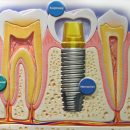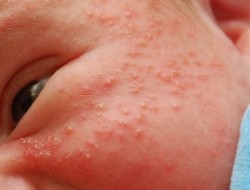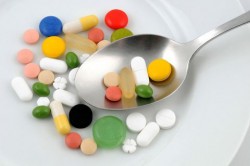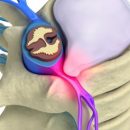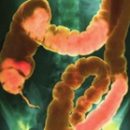What is sclerotherapy?
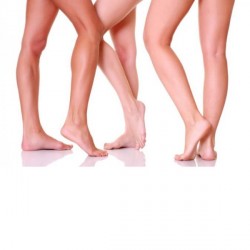
Thanks to sclerotherapy, it is possible to remove without operational intervention by bloodlessly varicose veins, vascular neoplasms, haemorrhoids. During the procedure in the clearance of the vessel, it is necessary to introduce a special preparation that causing gradual gluing of its walls and slow resorption in the future. The technique was first applied by the surgeon from France Edward Shassenyak back in 1853. But in those days, the development of sclerotherapy slowed down, because the drugs introduced into the vessels gave many pronounced side effects. Currently, there are highly efficient drugs in the arsenal of phlebogogov, but they are still safe. It is allowed to apply those medicines in the clinics that were approved by the Pharmaceutical Committee of the Russian Federation. For example, thrombusar, fibro-vein, ethoxyclerol.
So, the essence of the procedure is as follows: the medicinal substance, falling into the pathological vessel, damages the vascular wall and then leads to its scarring. Gradually occasion of the lumen of veins, the vessel turns into fibrous litter, not causening pain. He is absorbed about 3-6 months. Previously, extended veins were removed only by surgical, anesthesia was needed for the operation. Then the patients were delivering, the recovery period was required. Sclerotherapy has no such drawbacks. But how is the procedure? At first, the doctor asks the patient about the disturbing symptoms, then processes the inspection, prescribes modern research methods that will allow you to decide on the treatment tactics. And if there are explicit testimony to sclerotherapy, there are no contraindications, then you can proceed to the procedure. A thin needle of a syringe containing a sclerosing drug is introduced into the patient's vein. For one session, as a rule, is carried out from two to ten injections, it depends on the degree of expression of pathology. All this leaves from ten to twenty minutes. Immediately after the procedure, elastic bandages will be required, compression stockings or special bandage. All this is necessary that blood descending under pressure in the lower limbs does not prevent the discharge of venous walls and gluing them. There are cases that the doctor prescribes sessions again, after a few days. More than five sessions are not conducted.
Now doctors resort to three main varieties of sclerotherapy:
- The main equipment remains microscler therapy, it was previously described. It is carried out only in cases where the dimensions of pathological formation of no more than two millimeters.
- Echo sclerotherapy - it allows directly at the moment of administration of the drug to carry out ultrasound duplex scanning, allowing the doctor to control the location of the needle in pathologically changed vessels. Then sclerosing funds will be introduced precisely to the place where they are needed. This technique allows the phlebologist to scrue, if necessary, large and deeply occurring veins.
- Foam sclerotherapy (its second name - Foam Form therapy). Detergents are used as sclerosing funds. These substances are capable of mixing with air to turn into a foam (ratio 1: 3 or 1: 4).
Indications for sclerotherapy

Sclerotherapy allows you to cope with the above-described symptoms without pain, just, and even in a short time. But on the cause of the disease, these sessions do not affect. Therefore, there is a method and disadvantages:
- If the walls of the veins in the patient are weak, that is, the probability that the pathology of the vessels will also appear in other sites.
- In the heart failure in some cases, varicose veins is its consequence.
- If, after getting rid of the hemorrhoid, the person continues to eat irrationally, leads a sedentary lifestyle, moves very little, suffers from constipation, then hemorrhoids can return.
The effect of sclerotherapy is long-term, but, unfortunately, not for life. Once again we emphasize that the cause of the varicose sclerotherapy can not.
Sometimes after sclerotherapy, small complications that are temporary character are happening:
- In the place of introduction it is a small itching, it can be observed with an episodically for two hours after a session, but for some patients - for several days;
- The skin along the course of veins can be lightly darken;
- If a little drug gets under the skin, and not to Vienna, then a burn is possible, which will soon pass on its own;
- small wounds or peeling of the skin in those places where the drug was introduced (in two weeks this phenomenon will disappear);
- Very rarely, the patient feels for nine days after the procedure periodic pain in the course of the sclerosable vein;
- extremely rare patients at the injection site notice the vascular «Mesh», having red, it can hold over for several months;
- If formations are treated in an ankle zone, then a minor edema is possible in the case when the patient wears close shoes (or high heels are present on it).
More serious complications are extremely rare, but our website will also mention them:
- Thrombophlebitis - it is characterized by an inflammatory process in the venous wall. This happens during sclerotherapy of larger vessels or non-compliance with the recommendations of the doctor about the wearing elastic stocking or bandages.
- Strong burn (arises due to the fall in fabrics surrounding vein, a large number of sclerosing drug). Then there is a risk that healing will go for a long time, and then a noticeable scar will remain in this place.
- Veins thrombosis - the formation of blood cloth in the vessel as a result of the introduction of the sclerosing agent, is far less and less common than with surgical treatment of varicose veins.
About contraindications
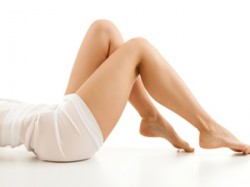
It is impossible to carry out the procedure of sclerotherapy with the following categories of patients:
- who has allergy for drugs used in carrying out this technique;
- women in the period of tooling the fetus or feeding baby breasts;
- suffering severe atherosclerotic damage to the vessels of the lower extremities;
- patients with thrombosis or thrombophlebitis of lower extremities;
- Those who are in places of intended injections are inflammation or infections;
- with some heart defects.
Recommendations after Procedure
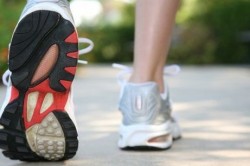
To get the most desired effect from sclerotherapy, avoid side effects and complications, follow the following recommendations:
- Immediately after the session, walk around 60 minutes.
- Every day, do walking over the same 60 minutes when you have time.
- Do not smoke and refrain 48 hours from alcohol.
- Within three days from the moment of session of sclerotherapy, do not engage in aerobics, gymnastics, forget about the exercise bike.
- Within 14 days, often change the pose, avoiding long lying, standing or seating.
- Forget for two months about hot baths, saunas, baths.
- Elastic stockings or bandages have to wear 3-4 months. In the future, they will help to avoid recurrences of varicose disease.
And one more important advice: the most convenient to plan sclerotherapy sessions not for hot months.
Excellent results from sclerotherapy can be obtained using special equipment to help carry out a more accurate drug in the vessels. Professionally completed procedure does not give complications and side effects. Do not let the varicose disease on a self-shot, contact the Flebogo specialist in a timely manner.

